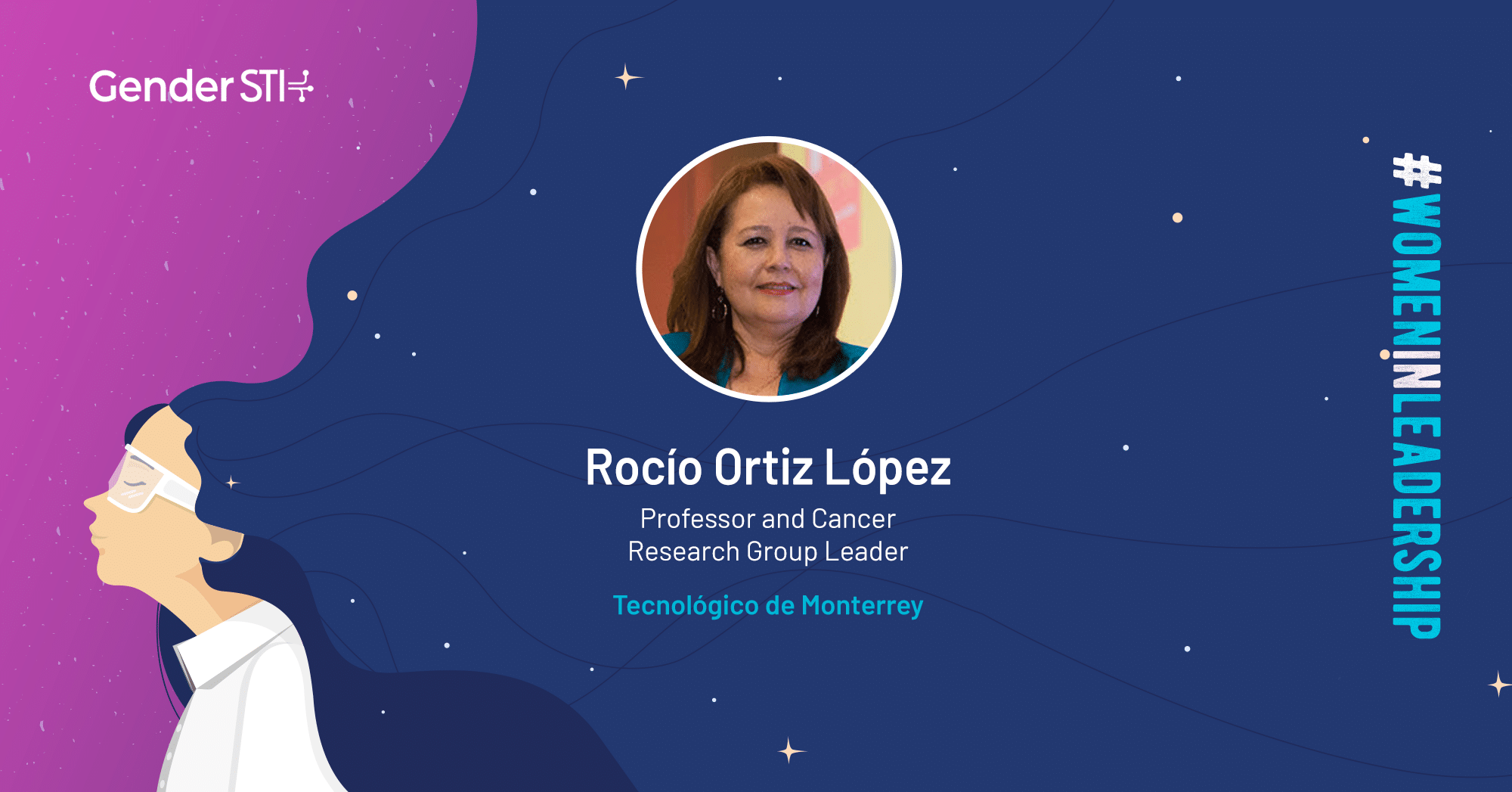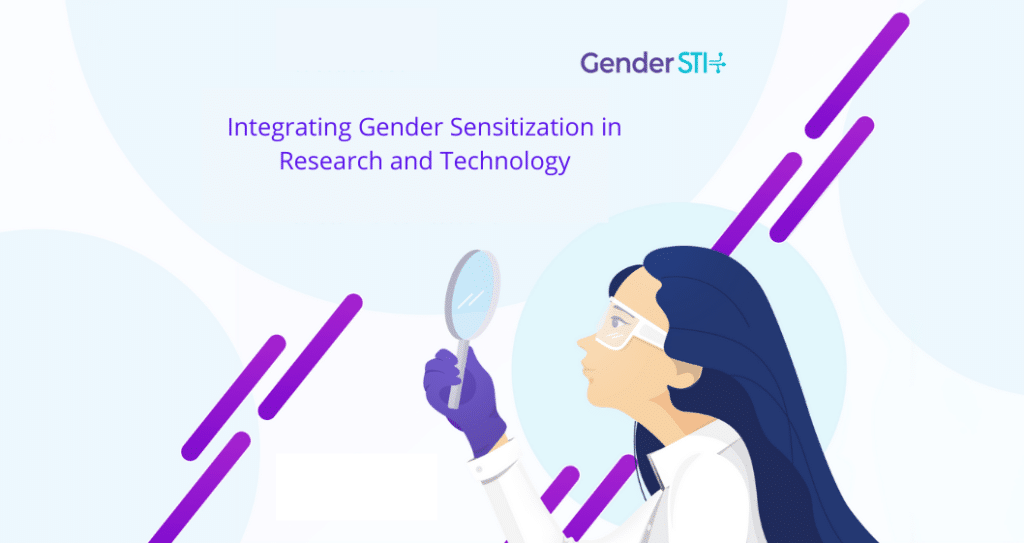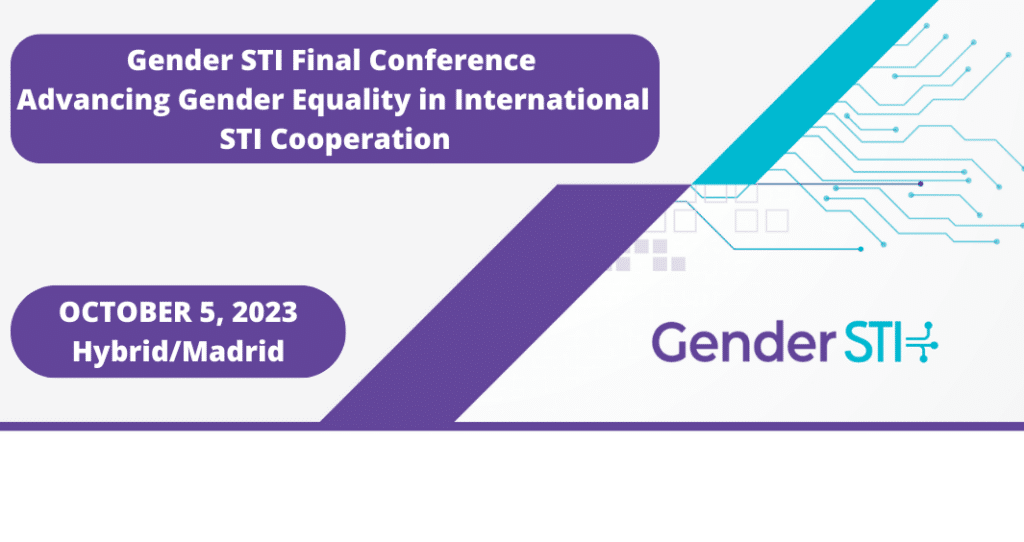Rocío Ortiz López was nominated for Gender STI's #WomenInLeadership Campaign, which celebrates women leaders in science, technology and innovation, by Tecnológico de Monterrey in Mexico.
She is professor at Tec de Monterrey and leader of a cancer research group. Ortiz specialized in molecular biology of disease and genomic medicine but slowly made her way into the area of cancer. She likes finding out and implementing methodological tools that allow for the research of this disease. The ultimate goal of her research is to identify molecular and metabolic targets that might work as clinical tools to enhance early cancer detection, improve therapies and reduce mortality.
Ortiz spoke to Gender STI about her experience as a woman leader in honor of International Women's Day 2021.
Can you tell us a bit about your job and your responsibilities?
I am a research professor at the School of Medicine and Health Science at Tecnológico de Monterrey, and I am the leader of a cancer research group. I teach undergraduate and graduate students and also advise Master’s in Science and PhD student’s projects. And my great responsibility is to be the lead of a group of professors and clinicians whose common interest is cancer research.
Our objectives are to promote research in order to reduce people´s risk of developing cancer, diagnose cancer in early stages, find biomarkers that help to prolong patient survival or better select effective therapies. I am also the leader of a Clinical Metabolomics Laboratory and I advise the Molecular Diagnostic Laboratory for the implementation of molecular and genomic tests.
Did you face any challenges on your journey to become a woman leader? How did you overcome them?
In my personal experience, women sometimes did not show solidarity with me as I expected. I received more support from my male boss than from my female boss. The most difficult time in my research career was when I was raising my three children. I always felt that the progress I was making was very slow. I consider that to this day, a time when I have reached a certain maturity in my career, the challenges faced in research are similar for both men and women.
What goals do you have as a leader?
As a group leader, I support my collaborators and promote their growth and personal development. I seek funding and new opportunities to expand the area of knowledge in cancer research and generate new feedback that can be applied to patients (translational research).
I also try to convey my passion for research to young students because I want to be an inspiration for young researchers. When it comes to young female researchers, I help and strongly encourage them to continue and consolidate their STI careers.
How would you describe the gender balance in decision-making in science, technology and innovation (STI)?
Even though I believe there is still more equality to be achieved, women’s representation in decision-making roles in STI fields has increased in Mexico and around the world during the last few years.
As an example, currently, it is a woman who leads Mexico’s Science and Technology Council (CONACYT) which indicates that opportunities for women to partake in leadership roles do exist.
What would you tell young girls and women who would like to become leaders in their professional fields one day?
I would tell them to follow their instincts and be persistent and passionate about their selected theme of research. When you put in your best effort and passion in what you do, then you stand out from the others. Eventually, people will start to recognize your work and then one day you will naturally become a leader in your professional field.
As you may know, the Gender STI project focuses on promoting gender equality in international cooperation in STI. Do you have any ideas on how we could promote gender equality in this area?
Women represent between 59 and 60% of the total population of College and Master’s Degree programs in science. However, in PhD programs, women’s representation falls to 40%. Only 30% decide to continue a career in research, and those who manage to stay in research and academia represent only 15% of the total scientific population.
These percentages of women representation in STI fields are quite similar around the world, independent of country, religion, or culture.
The numbers are closely related to the woman’s age, biological activity (e.g., pregnancy), and social roles (e.g., become mothers and heads of family) which women affront throughout their lives. And this also give us an idea of those moments in a woman’s life where we could offer some support during the consolidation of their scientific careers.
STI careers demand time, dedication, and focus. Women should be able to freely dispose of this time as much as men do.
I consider that there should be more social programs which support women in reproductive age and during maternity; we should promote the balance of household responsibilities between men and women; and women themselves should learn to delegate work and take more active and leadership-focused roles in their professions.
Finally, it is important to consider that women might need to take a break or slow down their research careers during certain stages of their lives due to certain personal circumstances, but they should consider just to take a break, not completely quit their career in STI research.
What do you think needs to be done to increase the number of women leaders in STI?
I believe there must be a genuine and credible conviction to offer women opportunities in leadership roles.
Most institutions claim to support gender equality policies, but they only do it to follow trends. They preach their support to this issue only because they want to be considered an exemplary and just institution. However, such institutions do not have a genuine intention to promote gender equality. If they practiced what they preached, vacant positions would not be filled until there was equality in representation.
If there are jobs where women constitute a minority and there are no female candidates to fill vacant positions, companies and institutions should undertake the task of educating, preparing, and training women to fill these positions. There should be policies in place so that executive or leadership positions are rotated between men and women.
This way, women would genuinely be encouraged to participate equitably in any position in STI and, in consequence, it would promote an increase of women leaders in these fields.
Follow Gender STI’s #WomenInLeadership campaign on Twitter, LinkedIn and Facebook for more great interviews. Join the conversation using #WomenInLeadership, #IWD2021 and #GenderSTI.



